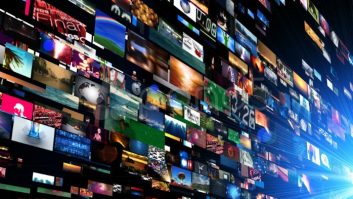With consumers reportedly moving away from linear TV in their droves and digital advertising becoming more sophisticated than ever before, is the era of TV advertising well and truly over?
The traditional TV ad market has been facing a number of significant threats. Even before Covid, advertisers were being lured away from traditional TV to over-the-top (OTT) services that generally over much better opportunity for targeted advertising. Of course, there is also significant competition from other digital avenues such as social media which has masses of data on all of its users, helping to truly personalise ads and recommendations.
Impact of Covid
The global pandemic has impacted the situation further as it has hit ad budgets hard. Companies, faced with smaller budgets, are having to choose carefully where to place ads and it looks like TV is suffering. Indeed, many advertisers froze or drastically reduced their advertising budgets. In the UK alone, advertisers pulled more than £1.1billion spend during Covid. There was reportedly around a 35 per cent decline in TV ad spend in the UK.
Naturally this led to broadcasters having to drastically reduce ad costs. Many broadcasters launched schemes to subsidise smaller advertisers who were then able to jump to TV advertising for the first time.
At the same time, 2020 saw a dramatic shift in consumer consumption, with more people at home for longer periods. Not only did this increase video consumption, it also saw more viewing happening on the main screen. According to a report by the Advertising Standards Authority (ASA), TV viewing increased and total ad exposure rose by 15.6 per cent between weeks 12-18 in 2019 and the same weeks in 2020, to an average of 340 weekly impacts per person during lockdown. It is clear that while the budgets were restricted, TV advertising has not lost its impact, and if anything, it has increased.
AVoD and FAST
Traditional TV advertising is also being impacted by the roll-out of Free Ad-supported (FAST) and Advertising Video on Demand (AVoD) services. In the US in particular these services are having a huge impact on the TV landscape. Recent reports suggest that AVoD revenue will triple in the US by 2025.
While they have been prolific in the US, that is not the case in Europe where the cost to subscribe to linear TV is much lower. That is not to say that these services are not growing. It is likely that in the months and years to come we will see more viewers signing up to AVoD services and moving at least some of their screen time away from traditional linear providers. This will naturally have a knock-on effect for advertisers who will ultimately want to go where the audience is.
What does the future hold?
A recent report from the Advertising Association/WARC suggests that the UK’s TV advertising sector will not fully recover the loss from Covid until 2022. Talk of cord-cutting is further adding to the threat for traditional TV providers. However, I don’t think the future is as bleak as some may paint. You just have to look at the sheer volume of revenue these providers get from advertising, even with the decline, to understand that it is a massive market. When we talk about decline, even though the figures are huge, what remains is still massive amounts of investment pouring in, so it I don’t think we can predict the death of linear TV just yet.
That said, I do think providers will need to adapt to survive for the long term. As AVoD and FAST services continue to rollout, traditional providers will need to provide a more holistic offering to keep advertisers on board. That also means being able to serve targeted dynamic ads across multiple platforms. Traditional providers are in a strong position to act as a hub for all of that advertising, no matter the platform because they already have a direct relationship with both advertisers and subscribers. Now they just need to tap into that to remain relevant long into the future.







